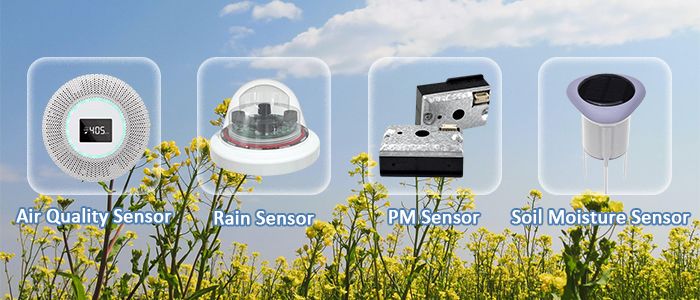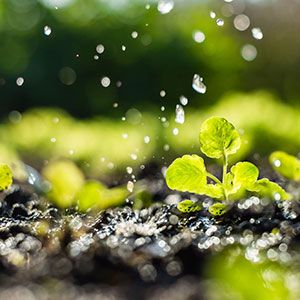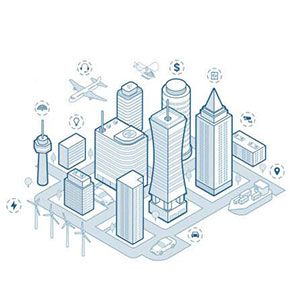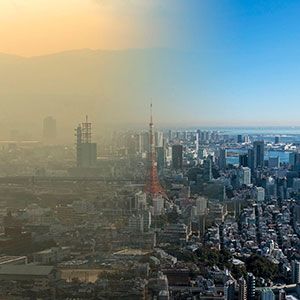Environmental
Laser Particulate Matter Sensor, 0.3-10μm
NDIR Carbon Dioxide (CO2) Sensor, 0 to 2000ppm/0-6000ppm
Noise Sensor, Analog Output, 30dB-130dB
Outdoor Air Pollution Sensor, Louvered Box
Radar Rain Gauge Sensor, Weather Instrument, 0-200mm/h
Smart Plant Soil Sensor, Temp/Humidity/pH
T Type Surface Thermocouple, -200~200℃
Accurate Piezoelectric Rain Sensor, 0-4mm/min, RS485
Air Quality Sensor for Home, TVOC/CO2/CH2O
Duct Humidity Sensor, RS485/0-5VDC
Dust Sensor Module, PM2.5/Temperature/Humidity/VOC/CO2
High Pressure Oxygen Sensor, 0-100% Linear, 3 Pin Interface
Industrial CO Sensor, 0-1000ppm
Industrial Infrared CO2 Sensor, UART, 0-2000ppm to 0-100% Vol
K Type Thermocouple Probe, 0~400℃
Methane (CH4) Gas Sensor, 0-5% Vol, 0-100% Vol
NTC Temperature Probe for Home, -40-300℃
Remote Infrared Temperature Sensor, 500-1400℃
Smart Soil Moisture Sensor with APP Control
Soil Oxygen Sensor, 0-25% vol
In today's rapidly developing landscape of industrial automation, smart cities, and environmental protection, environmental sensors have become a critical component of information sensing systems. Whether detecting harmful gases in the air or monitoring soil moisture in real time, environmental sensors leverage their high sensitivity and rapid response capabilities to be widely applied in various ecological monitoring, agricultural management, smart building, and public safety projects. With the global focus on sustainable development and low-carbon technologies, the market demand for high-performance environmental monitoring equipment continues to grow.
Environmental sensors operate on a variety of principles, typically based on the physical, chemical, or biological characteristics of the measured substance. Take air quality sensors as an example; their core principle often relies on electrochemical or semiconductor technology. When the sensitive material on the sensor's surface reacts with specific gases in the air (such as CO₂, NO₂, O₃, or TVOC), the charge changes, converting into an electrical signal that is output to the control system for analysis. Similarly, soil moisture sensors may use a capacitive principle, measuring changes in soil dielectric constant to determine moisture content.
Types of Environmental Sensors
Environmental sensors come in a wide variety of types, which can be broadly categorized based on the monitored object into gas sensors, soil sensors, moisture sensors, and meteorological sensors, among others.
Gas sensors include devices that detect various target substances such as carbon dioxide, flammable gases, ozone, carbon monoxide, ammonia, and hydrogen sulfide, and are suitable for industrial safety, building ventilation systems, and urban air quality monitoring.
Humidity sensors are an indispensable component of environmental monitoring systems, used to detect relative humidity (RH) or absolute humidity in air or enclosed spaces. Their operating principles typically rely on capacitive or resistive detection. Humidity monitoring plays an extremely important role in applications such as HVAC systems, green buildings, warehousing and logistics, and electronics manufacturing facilities.
Soil sensors are more suitable for smart agriculture and water-saving irrigation systems, enabling precise monitoring of moisture, temperature, and conductivity changes in fields. Weather sensors, such as wind speed, wind direction, temperature/humidity, and atmospheric pressure sensors, provide data support for smart weather stations and wind farms.

Application of Environmental Sensors
In practical applications, environmental sensors have already penetrated multiple critical fields. Urban air quality monitoring systems utilize multi-sensor grid layouts to collect real-time pollution data and drive policy adjustments. Agricultural irrigation systems use soil moisture and temperature sensors to implement an on-demand water supply, conserving resources while ensuring crop growth.
Industrial enterprises rely on VOC or toxic gas sensors to ensure production environment safety and prevent leakage accidents. In smart buildings, carbon dioxide and PM2.5 sensors are often integrated with fresh air systems to regulate ventilation efficiency and optimize energy use. Notably, with the development of IoT technology, an increasing number of environmental sensors now support wireless transmission and remote monitoring, enhancing the flexibility and real-time nature of data collection.

Agricultural Irrigation

Industrial Enterprises

Smart Buildings

Urban Air
SUCH, as a technology-driven company specializing in the R&D and production of industrial-grade sensors, continues to launch environmental monitoring products covering multiple fields such as gas, soil, humidity, and meteorology. The products not only offer a comprehensive range of options, including mainstream signal interfaces such as RS485, 4-20mA, and 0-5V, but also excel in terms of anti-interference performance, weather resistance, and measurement accuracy. They are widely applied in government environmental projects, research platforms, and automated systems.
For example, SUCH's multi-functional air quality sensor can simultaneously monitor multiple indicators such as CO₂, PM2.5, and TVOC, and achieve efficient integration with PLC systems via the Modbus protocol. Its soil sensor series, featuring an IP68 protection rating and low-power design, is ideal for long-term outdoor deployment.
In summary, environmental sensors are not only the sensory entry points for building digital ecosystems but are also increasingly becoming crucial decision-support tools. From data collection to intelligent integration, they are driving industries toward a greener, smarter future. Selecting high-quality, easy-to-integrate environmental sensor products is particularly critical for ensuring the stability and long-term operation of monitoring systems.
































































